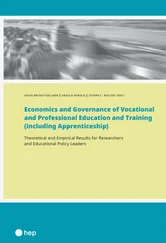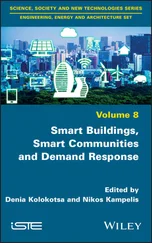2.2.1 Risk Communication
2.2.1.1 Risk
Risk represents the potential for loss as a result of the impact of natural, technological, and other hazards (see Chapter 1). More specifically, risk can be defined as ‘a situation or event in which something of human value (or humans themselves) has been put at stake and where the outcome is uncertain’ (Jaeger et al. 2001).
There are two main categories of definitions of ‘disaster risk’.
1 Disaster risk is a combination or function of hazard, exposure, and vulnerability. ‘Hazard’ is defined in Chapter 1. According to UNISDR (2017), ‘exposure’ is ‘the situation of people, infrastructure, housing, production capacities and other tangible human assets located in hazard-prone areas’. UNISDR (2017) defines ‘vulnerability’ as ‘the conditions determined by physical, social, economic, and environmental factors or processes which increase the susceptibility of an individual, a community, assets or systems to the impacts of hazards’. Exposure describes what could be harmed by hazards while vulnerability explains why it is in harm's way (Kelman 2018).
2 The combination (sometimes as a product) of the probability of an event and the consequences of the event.
Although there are these two categories of definitions, ‘the core concept within the definition of “disaster risk” does not really change over time or across different references, referring to overlapping notions of either: (1) possible losses from a hazard; or (2) potential adverse consequences in a disaster’ (Kelman 2018).
As with the disasters they produce ( Chapter 1), disaster risks are socially constructed primarily through pre-existing vulnerabilities. However, this does not disregard that there are risks in the physical world (Rosa and Clarke 2012).
Vulnerabilities that create, cause, and make the disaster are present waiting to be uncovered prior to any hazard. And the vulnerabilities linger through the post-disaster recovery, long after the hazard has diminished. For example, the devastating effects of Hurricane Katrina ‘arose out of a combination of place-based vulnerability and ecosystem, built environment and social vulnerability’ (Tierney 2014).
Further exploration of disaster risk and vulnerability, and their implications for disaster learning, is provided in Chapter 5.
The extensive body of research on risk perception helps to clarify people's innate biases and provide insights into how cultural, social, and emotional factors shape actual perception of risk. These learnings can then be translated to make risk communication more effective.
Knowledge, experience, values, attitudes, and feelings all influence the thinking and judgement of people about the seriousness and acceptability of risks.
The mental models and other psychological mechanisms which people use to judge risks are internalised through social and cultural learning and constantly moderated (reinforced, modified, amplified, or attenuated) by media reports, peer influences, and other communication processes (Morgan et al. 2001).
According to Renn (2008), there are two main approaches to the study of risk perception:
1 The ‘realist approach’. This approach aims to bring perception as close as possible to the actual risk of an activity or an event. It assumes that there is an outside objective world with risks that we can recognise and acknowledge (Rosa 2008). The solutions to problems of perception are then simply ones of more information and a greater understanding of the risk (Wachinger and Renn 2010).
2 The ‘constructivist approach’. Constructivists argue that risks are not objective but that they are subjective and socially constructed (Jasanoff 1998). That is, they are models which allow people to cope with non-reoccurring phenomena (Wachinger and Renn 2010).
Why might the public view hazard risk differently to experts such as emergency managers? People are often presented with a large amount of information (e.g. on potential hazards) and require some way of weighing up that information if they want to reach a conclusion about relevant risks. In general, the public relies on what are called ‘heuristics’ or – more commonly – rules of thumb. Heuristics are quick, informal methods that the brain uses to generate an approximate answer to a problem and allows people to quickly make sense of a complex environment (Renn 2008).
However, using heuristics can also result in biases, where risk perceptions are out of kilter with risk assessments by emergency agencies or other authorities. For example, if someone has experienced a hazard event, they are likely to see one as more probable in the future. Consequently, personal experience can be very important in perception of the level of risk, and reminders of particular risks in the media can also have an effect (Eiser et al. 2012). This ‘availability bias’ through personal experience or ‘local knowledge’ can improve local risk assessment by authorities through a cooperative approach (Dufty 2016).
‘Optimism bias’ is a cognitive bias that causes people to believe that they are at a lesser risk of experiencing a hazard event compared to others. This can cause them to opt out of any thinking (and resultant action) towards a particular disaster risk, believing ‘this is not going to happen to me’. On the other hand, individuals may tend to overestimate the potential for exposure and the extent of a hazard, thinking that they are more dangerous in comparison to other risks (Science Communication Unit 2014).
Of importance to risk communication is the fact that research shows cultural background influences risk perception. Compared with individuals in Western Europe, for example, people from many Eastern European countries are more likely to see economic or social risks as greater than technological risks (Science Communication Unit 2014).
Renn (2008) has designed a model of risk perception which shows the dynamics between the complex layers of factors, including cultural background, heuristics, and biases. Also of note are people's beliefs and values, their socio-economic status, and world views.
The relationships between risk perception and emergency behaviours (e.g. preparedness, evacuation, and recovery) are discussed in Section 5.2.
Trust in the communicator is an important factor of risk perception with strong ramifications for effective risk communication. It becomes even more important when the individual's knowledge about the hazard is low and they have to depend on authorities for risk knowledge (Cope et al. 2010). Also, there seems to be a strong relationship between the uncertainty of the risk and the role of trust (Frewer and Salter 2007).
According to the Science Communication Unit (2014), research suggests that three main factors influence trust in an institution:
1 competence (i.e. the knowledge and capability to manage the risk in question);
2 a history of being open and honest and acting in the public interest;
3 sharing the same values as the individual.
2.2.1.4 Communicating Risk
Risk communication seeks to inform people about a potential future harm and the associated dangers so that they might take action to mitigate the risk.
A long tradition in risk communication has relied on the idea that simply informing people will increase their understanding and awareness of risk. This approach assumes that experts (e.g. emergency agencies), holding superior knowledge, communicate to the less informed (e.g. at-risk people). However, it has been found that a direct, linear approach to providing official information to increase recipient awareness does not necessarily lead to action (Fischhoff 1995).
Читать дальше












